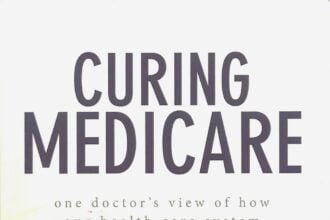The named patient program (NPP) allows patients and doctors to market authorized pharmaceuticals inside their own country. To get these pharmaceuticals approved under the NPP in at least one country, the patient must first provide their permission. As a result of constantly changing lifestyles and rising stress levels, the incidence of rarer and more unique illnesses has increased.
At the same time, as patients and doctors become more aware of unlicensed pharmaceuticals and utilize social media and the internet to obtain and spread medical information, the named patient program receives more attention.
According to the World Health Organization’s (WHO) definition, some illnesses require the use of unlicensed medicines, orphan pharmaceuticals, or novel therapies. The market quickly fills the unmet need for these therapies.
Uses of the Named Patient Program
The named patient program benefits all pharmaceutical sponsors. In most situations, sponsors want to launch their products in major markets where they can reach a larger number of patients, as well as in well-established pharmaceutical marketplaces in nations like the United States of America, Europe, Japan, and other big ones.
The right to access, acquire, and import medications that have the potential to save the patient’s life or improve the patient’s quality of life is granted to a patient from any country who is identified as “the named patient” and suffers from a chronic, severe, or life-threatening illness. On the other hand, the rules and regulations governing the importation of innovative medications differ from country to country. Each country must follow its restrictions while importing such drugs. Several existing programs, such as the Named Patient Import Program, the Early Access Program, and the Compassionate Use Program, aim to accelerate the importation of these medications. Nonetheless, each country follows its national agenda.
The named patient program (NPP) allows patients and clinicians in the United States access to commercially approved pharmaceuticals that they would not be able to get in their native country. The named patient program (NPP) requires approval of certain drugs in at least one country before allowing their import into the patient’s country.
What’s the Difference between Compassionate Use and Named Patient Programs?
Both programs serve patients who have serious conditions and need emergency medical attention. When no other treatment choices are available, the programs allow participants to get experimental or unapproved drugs. Neither of these programs is confined to a single patient, although they may be used with a small group of patients.
Health agencies such as the Food and Drug Administration (FDA) or the European Medicines Agency (EMA) supervise these operations on a national or worldwide level. Before the patient or patients in question may access the medicine, physicians must apply for approval and undergo an ethical examination.
The national level regulates Named Patient Programs (NPPs). As a result, the criteria may vary across countries. On the other hand, the named patient program (NPP) provides a more efficient and adaptable method for obtaining pharmaceuticals in areas where approval is still pending. A physician may get a drug for a specific patient directly from the manufacturer or a relevant supplier (with the assistance of a registered chemist).
Named Patient Programs in Different Countries
By implementing named patient programs or expanded access programs, the majority of countries around the world have enabled their medical practitioners to supply unlicensed medications that might save their patients’ lives in an emergency. The FDA’s Expanded Access Program (EAP) includes the Named Patient Program in the United States. When it comes to treating life-threatening or crippling illnesses, the CDSCO in India approves the importation of unapproved medications for certain individuals. The European Medicines Agency (EMA) offers Compassionate Use and Named Patient Programs to improve access to unlicensed pharmaceuticals in the European Union. On the other hand, the Medicines and Healthcare Products Regulatory Agency (MHRA) in the United Kingdom allows named patient imports for applications that match the criteria. In addition, there are named patient and extended access programs in other countries throughout the world, including Africa, South America, Asia, and the Middle East, as well as Australia and New Zealand. These programs allow participants to explore potentially life-saving therapies for life-threatening diseases.
Conclusion
Named patient programs (NPPs) seek to streamline the process of determining the best therapy for a patient’s specific medical needs. There may be a therapy available in your region that is just as useful. On the other hand, it is encouraging to know that there are further choices available for patients who have exhausted all local options or who have a unique illness that is now in the “waiting room” for therapeutic approval.










